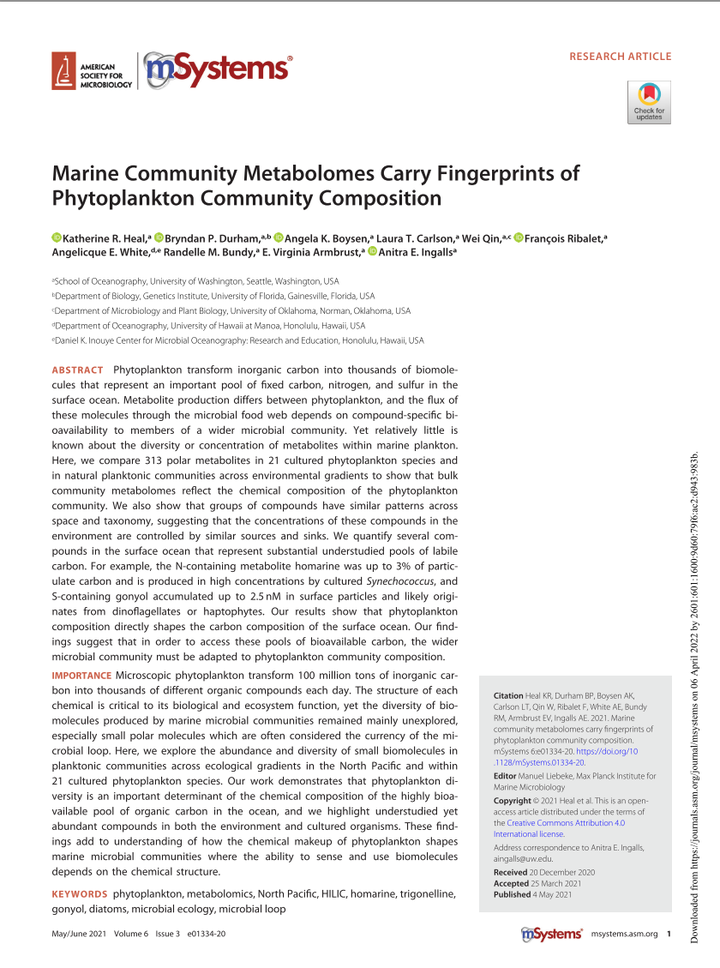Marine Community Metabolomes Carry Fingerprints of Phytoplankton Community Composition

Abstract
Microscopic phytoplankton transform 100 million tons of inorganic carbon into thousands of different organic compounds each day. The structure of each chemical is critical to its biological and ecosystem function, yet the diversity of biomolecules produced by marine microbial communities remained mainly unexplored, especially small polar molecules which are often considered the currency of the microbial loop. Phytoplankton transform inorganic carbon into thousands of biomolecules that represent an important pool of fixed carbon, nitrogen, and sulfur in the surface ocean. Metabolite production differs between phytoplankton, and the flux of these molecules through the microbial food web depends on compound-specific bioavailability to members of a wider microbial community. Yet relatively little is known about the diversity or concentration of metabolites within marine plankton. Here, we compare 313 polar metabolites in 21 cultured phytoplankton species and in natural planktonic communities across environmental gradients to show that bulk community metabolomes reflect the chemical composition of the phytoplankton community. We also show that groups of compounds have similar patterns across space and taxonomy, suggesting that the concentrations of these compounds in the environment are controlled by similar sources and sinks. We quantify several compounds in the surface ocean that represent substantial understudied pools of labile carbon. For example, the N-containing metabolite homarine was up to 3% of particulate carbon and is produced in high concentrations by cultured Synechococcus , and S-containing gonyol accumulated up to 2.5 nM in surface particles and likely originates from dinoflagellates or haptophytes. Our results show that phytoplankton composition directly shapes the carbon composition of the surface ocean. Our findings suggest that in order to access these pools of bioavailable carbon, the wider microbial community must be adapted to phytoplankton community composition. IMPORTANCE Microscopic phytoplankton transform 100 million tons of inorganic carbon into thousands of different organic compounds each day. The structure of each chemical is critical to its biological and ecosystem function, yet the diversity of biomolecules produced by marine microbial communities remained mainly unexplored, especially small polar molecules which are often considered the currency of the microbial loop. Here, we explore the abundance and diversity of small biomolecules in planktonic communities across ecological gradients in the North Pacific and within 21 cultured phytoplankton species. Our work demonstrates that phytoplankton diversity is an important determinant of the chemical composition of the highly bioavailable pool of organic carbon in the ocean, and we highlight understudied yet abundant compounds in both the environment and cultured organisms. These findings add to understanding of how the chemical makeup of phytoplankton shapes marine microbial communities where the ability to sense and use biomolecules depends on the chemical structure.